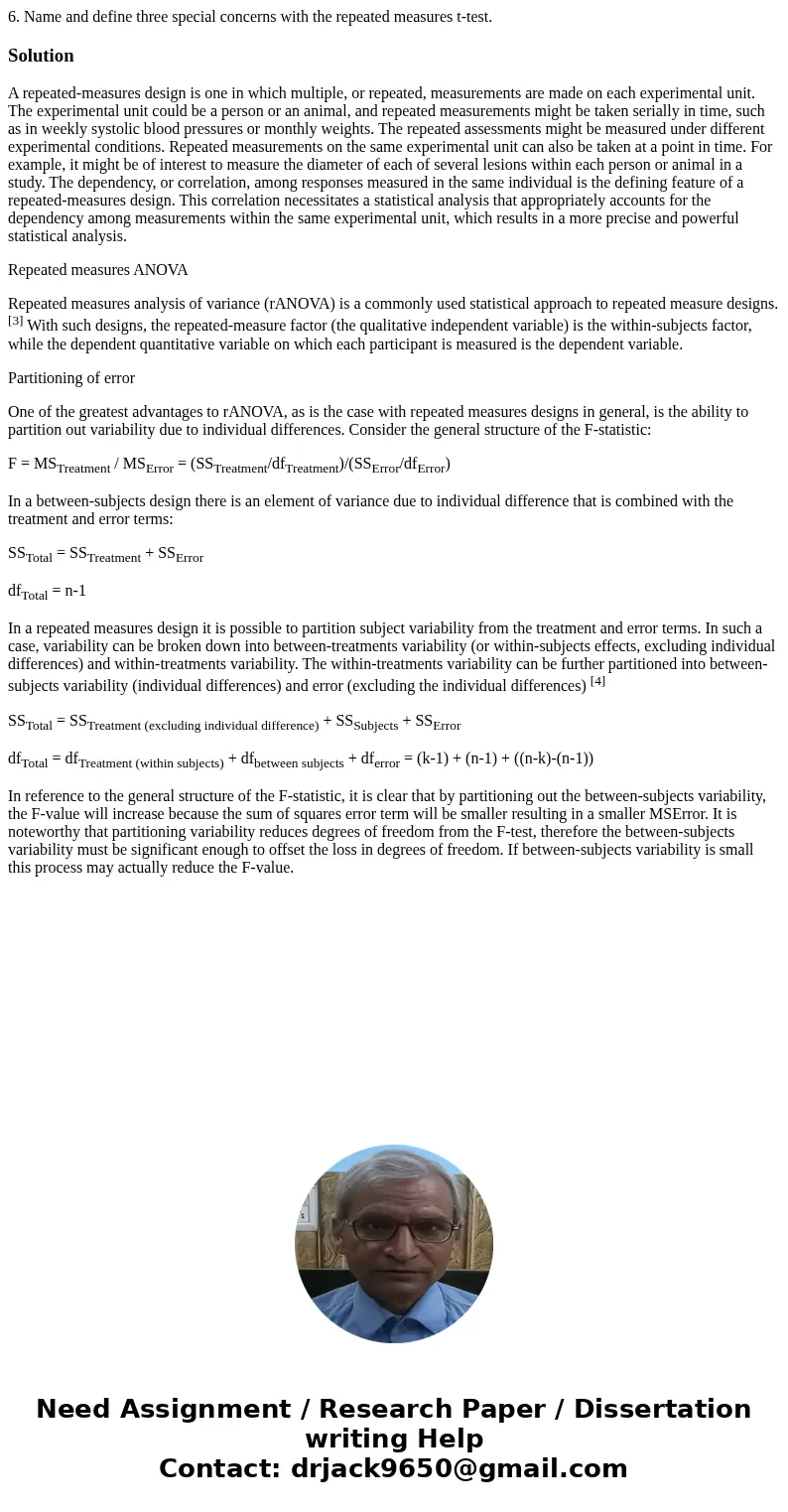6 Name and define three special concerns with the repeated m
6. Name and define three special concerns with the repeated measures t-test.
Solution
A repeated-measures design is one in which multiple, or repeated, measurements are made on each experimental unit. The experimental unit could be a person or an animal, and repeated measurements might be taken serially in time, such as in weekly systolic blood pressures or monthly weights. The repeated assessments might be measured under different experimental conditions. Repeated measurements on the same experimental unit can also be taken at a point in time. For example, it might be of interest to measure the diameter of each of several lesions within each person or animal in a study. The dependency, or correlation, among responses measured in the same individual is the defining feature of a repeated-measures design. This correlation necessitates a statistical analysis that appropriately accounts for the dependency among measurements within the same experimental unit, which results in a more precise and powerful statistical analysis.
Repeated measures ANOVA
Repeated measures analysis of variance (rANOVA) is a commonly used statistical approach to repeated measure designs.[3] With such designs, the repeated-measure factor (the qualitative independent variable) is the within-subjects factor, while the dependent quantitative variable on which each participant is measured is the dependent variable.
Partitioning of error
One of the greatest advantages to rANOVA, as is the case with repeated measures designs in general, is the ability to partition out variability due to individual differences. Consider the general structure of the F-statistic:
F = MSTreatment / MSError = (SSTreatment/dfTreatment)/(SSError/dfError)
In a between-subjects design there is an element of variance due to individual difference that is combined with the treatment and error terms:
SSTotal = SSTreatment + SSError
dfTotal = n-1
In a repeated measures design it is possible to partition subject variability from the treatment and error terms. In such a case, variability can be broken down into between-treatments variability (or within-subjects effects, excluding individual differences) and within-treatments variability. The within-treatments variability can be further partitioned into between-subjects variability (individual differences) and error (excluding the individual differences) [4]
SSTotal = SSTreatment (excluding individual difference) + SSSubjects + SSError
dfTotal = dfTreatment (within subjects) + dfbetween subjects + dferror = (k-1) + (n-1) + ((n-k)-(n-1))
In reference to the general structure of the F-statistic, it is clear that by partitioning out the between-subjects variability, the F-value will increase because the sum of squares error term will be smaller resulting in a smaller MSError. It is noteworthy that partitioning variability reduces degrees of freedom from the F-test, therefore the between-subjects variability must be significant enough to offset the loss in degrees of freedom. If between-subjects variability is small this process may actually reduce the F-value.

 Homework Sourse
Homework Sourse